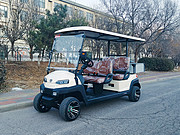
It has been said many times the future of the lodging industry will greatly be affected by hotels’ ability to appeal to millennials. On the surface, this “millennials or bust” attitude seems like a logical view to endorse. After all, millennials now outnumber baby boomers in the U.S., and millennials are expected to account for 50 percent of the workforce by 2020.
Unfortunately, such statistics are causing tunnel vision within the hospitality industry, leading to certain misguided conclusions being drawn, especially as they relate to the practice of architecture.
Here are a few thoughts on a different approach. Instead of being focused on trying to design hotels for millennials (a demographic), the conversation should be broadened to address how to best design hotels for the modern traveler (a psychographic).
Guests Are All After the Same Thing
Multiple studies agree millennials are looking for the following from their hotel stays: authentic experiences, contemporary design, and seamless connectivity. But really, isn’t that what all generations want?
Consider the following examples of “millennial design trends” that, when examined, arguably appeal to every modern traveler regardless of age:
• Minimizing the presence of front desks in lobbies: Gen-Xers and baby boomers are now more accustomed to using their smartphones to book airline tickets, schedule Uber rides, and pay bills. So it’s not a stretch to assume they will embrace downloading a mobile app allowing them to check into their hotel rooms. And what if that same app were to also uncover locals’ favorite spots to eat, drink, and shop? Being able to bypass long lines at the front desk and no longer relying on a concierge to provide hit-or-miss advice on hot spots to visit, are both positives outcomes for all guests.
• Smaller rooms that offer modularity: When visiting a city for work or play, guests of all ages typically leave their hotel room in the morning and don’t return until late at night when ready for bed. They expect their room, especially if it’s a newer hotel, to be intuitive, comfortable, and offer modern conveniences, such as easy accessibility to power electronics. With the small amount of time people spend in their rooms, it’s no longer an expectation the square footage accommodate a desk or a traditional chest of drawers. A small space can be just as functional as a big space if designed thoughtfully.
• Restaurants that offer authenticity: When guests spend extended periods of time on the premises of their hotels, their behavior patterns indicate they want to be where the action is. In newer hotel restaurants and bars, it’s not unusual to see younger business travelers seated next to a table filled with older tourists in full-fledged vacation mode. Both groups gravitate toward modern food and beverage options largely because they appreciate the eclectic mix of local design elements that give the space its character. A contemporary vibe paired with a menu of artisan cuisine has become the recipe for attracting a breadth of business travelers, tourists and locals.
• A sense of community that enables connection: People over the age of 50 tend to not be Snapchat or Instagram stars, but that doesn’t mean they aren’t texting, emailing, and sharing photos via Facebook with their family, friends, and colleagues. When it comes to leisure travel, guests of all ages are taking photos of everything in their hotels—the lobby, the view from the room and the room itself. Gen-Xers and baby boomers share the same desire to share experiences digitally as millennials do. Designing beautiful, open spaces is key for allowing that to happen.
Lag Time is Lessening
Research confirms the pace in which we as a society are adopting new views and preferences is speeding up. Today, if a trend becomes part of millennials’ lives, it’s sure to catch on with Gen-Xers and baby boomers within a relatively short period of time.
While there are certain industry disrupters aimed at appealing to younger generations—ordering room service by texting emojis for example—most changes in the hospitality industry, especially those relating to design, are arguably being embraced by the population as a whole.
By no means should millennials’ preferences be disregarded when it comes to designing hotel experiences. Far from it. Millennials should be a large part of the conversation being had by hoteliers and designers; however, the focus on this specific demographic should never become so magnified that other important factors get excluded.










Service Hotline
Work Time:Mon-Fri 9:00-18:00
UTC+8

Sinoexpo Digital Platform
Copyright 2006-2025 Shanghai Sinoexpo Informa Markets International Exhibition Co., Ltd. All rights reserved
沪ICP备05034851号-77
 沪公网安备 31010402000543号
沪公网安备 31010402000543号